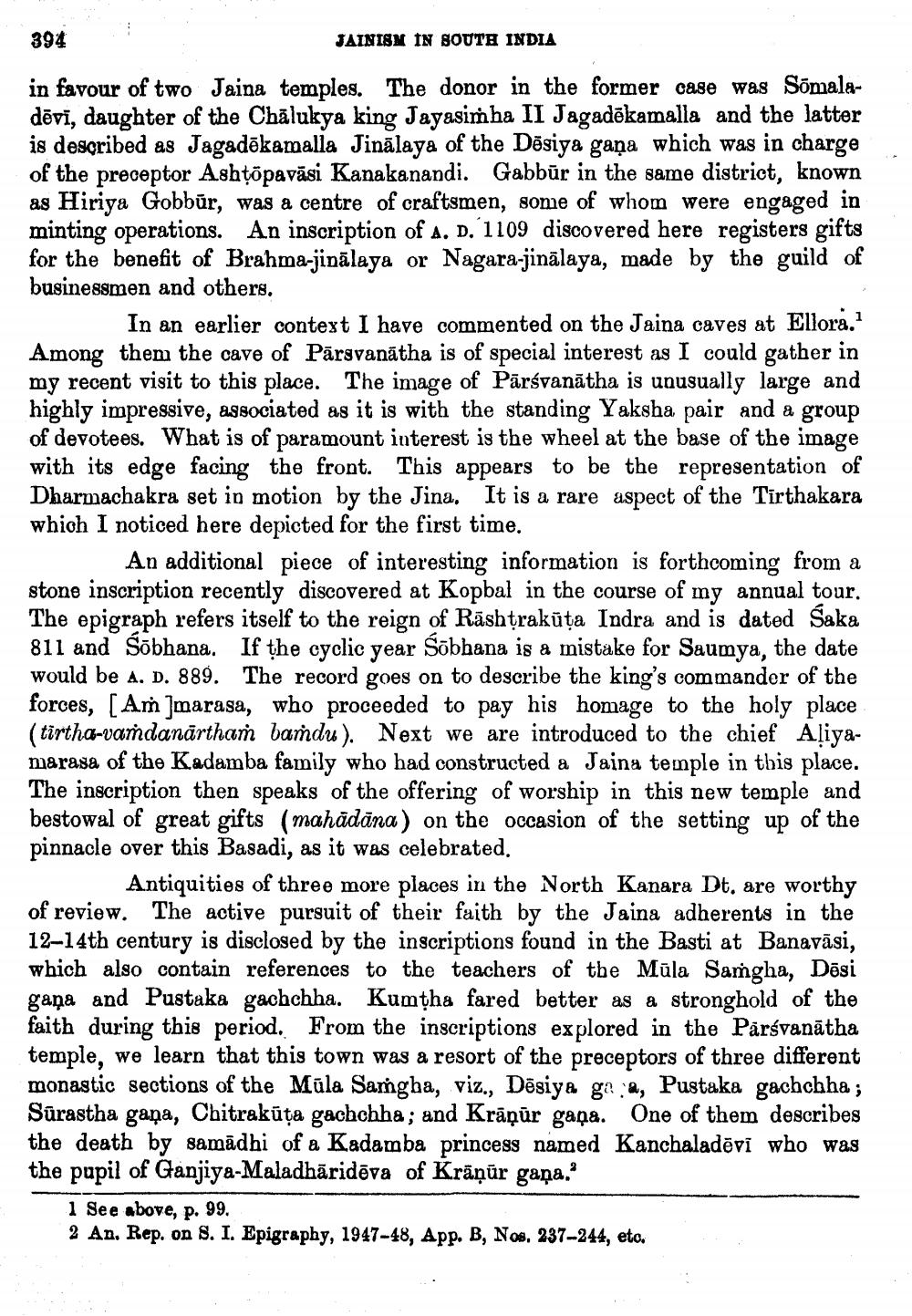________________
394
JAINISM IN SOUTH INDIA
in favour of two Jaina temples. The donor in the former case was Sõmaladēvi, daughter of the Chālukya king Jayasimha II Jagadēkamalla and the latter is described as Jagadēkamalla Jinālaya of the Dõsiya gaña which was in charge of the preceptor Ashțõpavāsi Kanakanandi. Gabbūr in the same district, known as Hiriya Gobbūr, was a centre of craftsmen, some of whom were engaged in minting operations. An inscription of A. D. 1109 discovered here registers gifts for the benefit of Brahma-jinālaya or Nagara-jinālaya, made by the guild of businessmen and others.
In an earlier context I have commented on the Jaina caves at Ellora. Among them the cave of Pārsvanātha is of special interest as I could gather in my recent visit to this place. The image of Pārsvanātha is unusually large and highly impressive, associated as it is with the standing Yaksha pair and a group of devotees. What is of paramount interest is the wheel at the base of the image with its edge facing the front. This appears to be the representation of Dharmachakra set in motion by the Jina. It is a rare aspect of the Tirthakara which I noticed here depicted for the first time.
An additional piece of interesting information is forthcoming from a stone inscription recently discovered at Kopbal in the course of my annual tour. Th
refers itself to the reign of Rashtrakūta Indra and is dated Saka 811 and Sõbhana. If the cyclic year Sobhana is a mistake for Saumya, the date would be A. D. 889. The record goes on to describe the king's commander of the forces, [Am]marasa, who proceeded to pay his homage to the holy place (tirtha-vaṁdanārtham baṁdu). Next we are introduced to the chief Aliyamarasa of the Kadamba family who had constructed a Jaina temple in this place. The inscription then speaks of the offering of worship in this new temple and bestowal of great gifts (mahādāna) on the occasion of the setting up of the pinnacle over this Basadi, as it was celebrated.
Antiquities of three more places in the North Kanara Dt. are worthy of review. The active pursuit of their faith by the Jaina adherents in the 12-14th century is disclosed by the inscriptions found in the Basti at Banavāsi, which also contain references to the teachers of the Mūla Samgha, Dēsi gana and Pustaka gachchha. Kumtha fared better as a stronghold of the faith during this period. From the inscriptions explored in the Pārsvanātha temple, we learn that this town was a resort of the preceptors of three different monastic sections of the Müla Sangha, viz., Dēsiya geia, Pustaka gachchha ; Sūrastha gana, Chitrakūța gachchha; and Krāņār gana. One of them describes the death by samādhi of a Kadamba princess named Kanchaladēvi who was the pupil of Ganjiya-Maladhāridēva of Krāņār gana.'
1 See above, p. 99. 2 An. Rep. on 8. I. Epigraphy, 1947-48, App. B, Nos. 237-244, etc.




